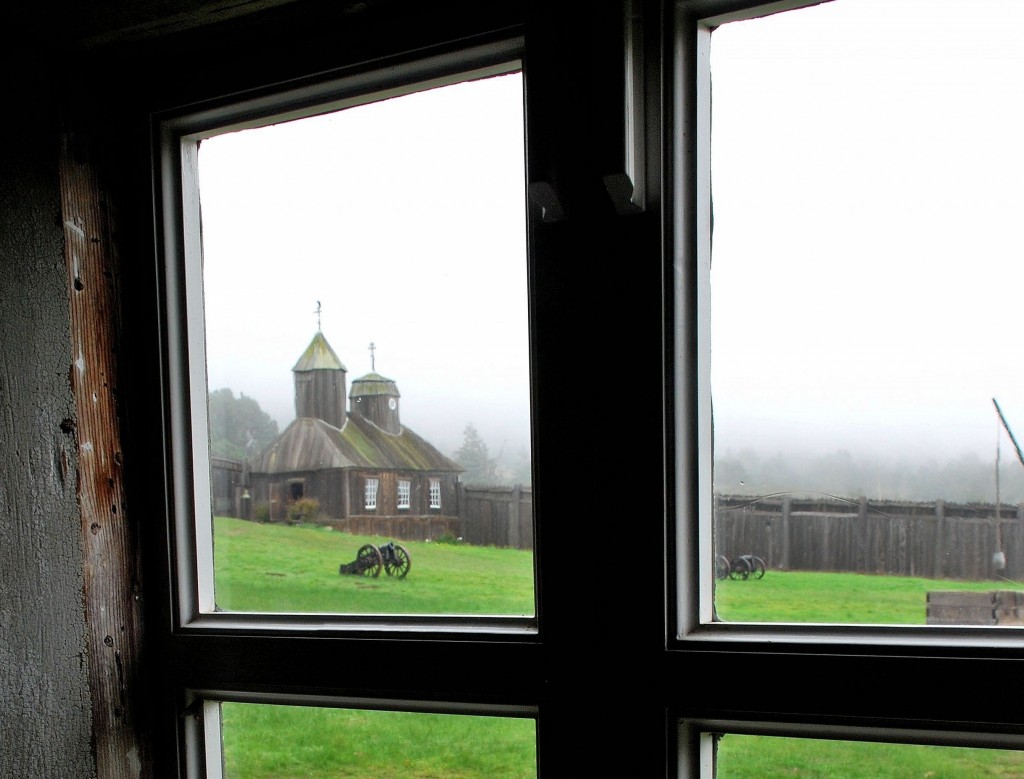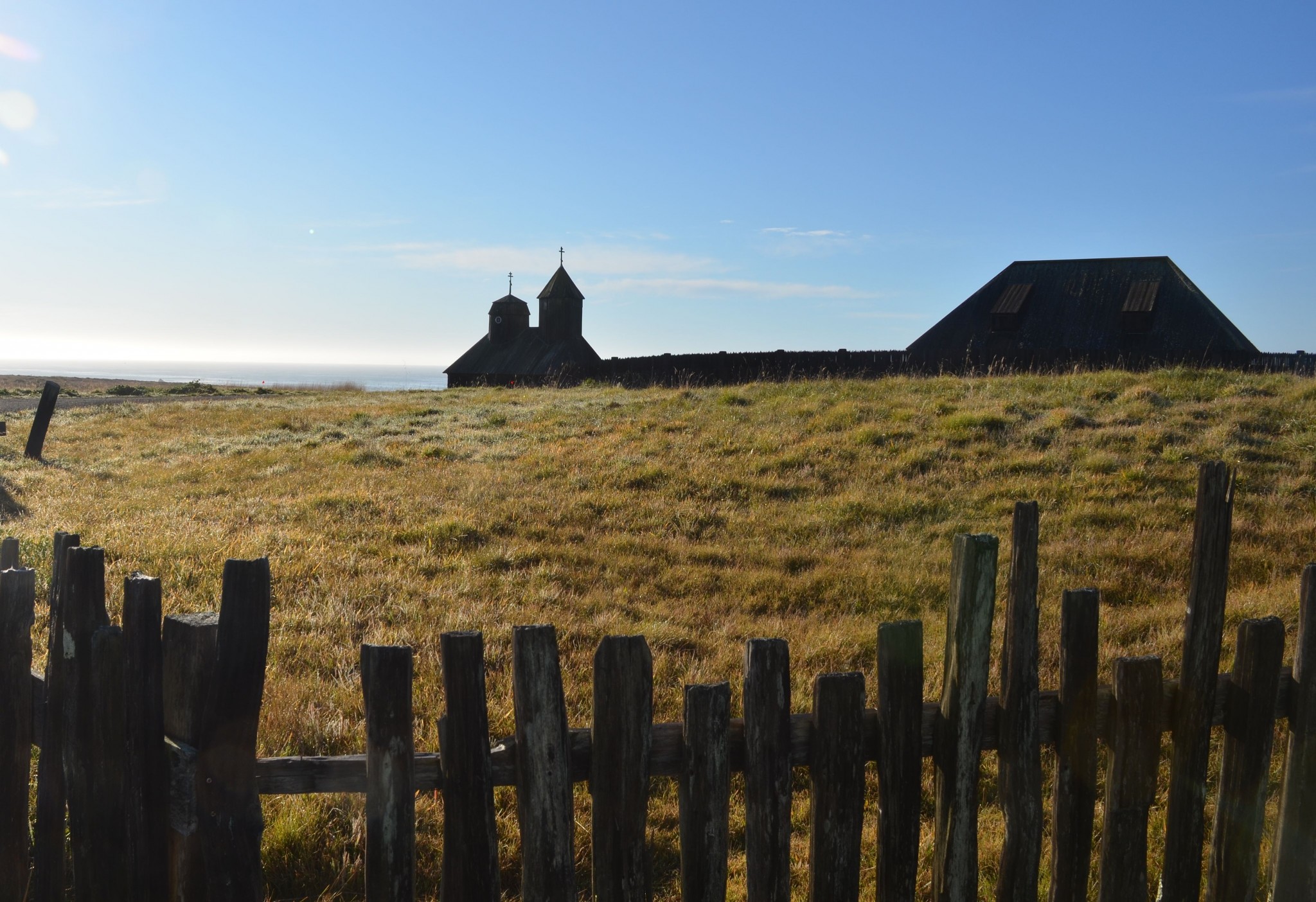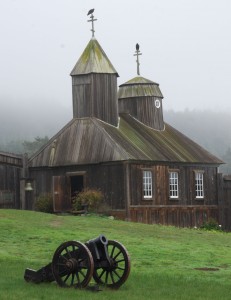A Russian colony in California? Da!
This week, our cyber road trip takes us about two hours north of San Francisco to Fort Ross State Historic Park. Here, Tsarist Russia established a settlement that operated from 1812 to 1841. Several of the buildings have been restored or rebuilt, and you can enter them and try to envision what life was like in Russia’s most far-flung outpost.
If you’re driving up the coast on Highway 1, you can’t miss Fort Ross. The entrance is right on the highway, on a terrace high above the ocean. Your first sight is the handsome Russian Orthodox chapel, made of weathered wood. Although Fort Ross isn’t worthy of a special road trip, you should definitely stop here for an hour or two if you’re in the area. If you live in the Bay Area, it’s a nice Sunday drive. You’ll find it 10 miles north of Jenner, which overlooks the mouth of the aptly named Russian River. The photo that appears just above the Welcome link on our Road Trips With Tom home page was taken just a mile or two south of the fort.

Russian supply source
Fort Ross was actually a commercial enterprise founded, built and operated by the Russian-American Company, which was a de facto arm of the Russian government. Russia’s first colonies in North America were in Alaska. Vestiges of these colonies can be seen in Kodiak and Sitka. (I’ll be visiting Sitka in May and will post an article and photos afterward.)
The primary purpose of Fort Ross was to provision Russia’s Alaska colonies. That included hunting sea mammals, which provided valuable pelts, along with farming and stock-raising. Considering the up-and-down geography of the area near the fort, it’s hard to imagine this as an agricultural center. Apparently, however, the Russians ventured some distance from the fort for suitable croplands and pastures. An orchard was planted near the fort; some of the trees remain and still bear fruit.
Using local timber, the colony built furniture and tools; it even launched a shipbuilding enterprise. The Russians brought with them about 60 Alaskan Inuits, who were highly skilled sea hunters – so skilled, in fact, that they pretty much wiped out the local population of sea otters. That, along with the colony’s failure to meet expectations in foodstuff production, spelled the end of Russia’s California outpost. In 1841 it was sold to John Sutter, the Swiss-born immigrant whose mill east of Sacramento was the site of the discovery that touched off California’s great gold rush.
Details for visitors
From now through March, Fort Ross State Historic Park is open Friday through Monday from 10 to 4:30. It will have expanded hours beginning April 1. Check the park’s web site for details: www.parks.ca.gov/?page_id=449. The entrance fee is $8.00 per vehicle ($7.00 for seniors). The campground is closed for the season, but you can camp at nearby Salt Point State Park. Accommodations are in Jenner and Guerneville.
To learn more about Fort Ross’s interesting history, visit www.fortross.org/russian-american-company.


